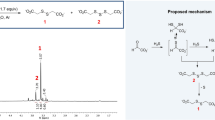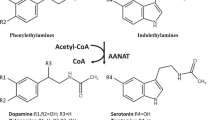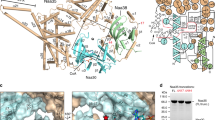Abstract
THE problem regarding the nature of the reactive, intermediate C2-compound in acetate metabolism is not clear at present. With regard to biological acetylations, it is evident, especially from Lipmann's1 work, that a strongly acetylating substance is formed in an enzymatic reaction between acetate and adenosine triphosphate. According to Lipmann's recent papers2, this intermediate is different from acetyl phosphate, but is transformed to acetyl phosphate in acid solution at room temperature. We have considered the possibility that the primary product in the phosphate transfer from adenosine triphosphate to an acceptor might be a metaphosphate compound. Some chemical and biological points in favour of this hypothesis will be discussed elsewhere.
This is a preview of subscription content, access via your institution
Access options
Subscribe to this journal
Receive 51 print issues and online access
$199.00 per year
only $3.90 per issue
Buy this article
- Purchase on Springer Link
- Instant access to full article PDF
Prices may be subject to local taxes which are calculated during checkout
Similar content being viewed by others
References
Lipmann, F., “Adv. in Enzymol.”, 6, 231 (1946).
Kaplan, N. O., and Lipmann, F., J. Biol. Chem., 176, 459 (1948).
Lipmann, F., J. Biol. Chem., 160, 173 (1945).
Frisk, A. R., Acta Med. Scand., Supp. 142, 75 (1943).
Author information
Authors and Affiliations
Rights and permissions
About this article
Cite this article
HEYMAN, H., ROSENBERG, T. Acetylation of Sulphanilamide by Acetyl Metaphosphate. Nature 165, 317–318 (1950). https://doi.org/10.1038/165317b0
Issue Date:
DOI: https://doi.org/10.1038/165317b0
Comments
By submitting a comment you agree to abide by our Terms and Community Guidelines. If you find something abusive or that does not comply with our terms or guidelines please flag it as inappropriate.



